When it rains grape tomatoes in the summer, it pours.
What can you do with all these ‘lil suckers when even your neighbours are begging mercy?
Well, you could use those grape tomatoes for juice, or for drying, but that seems a bit of a waste: these little gems are so expensive the rest of the year.
You may wish to consider pickling them instead to preserve a bit of that summer tomato goldrush.
Ball suggests using these for Bloody Marys and Martinis, or with a cheese platter.
You can make the regular version (18 calories, 197 mg sodium per 5 tomatoes) or the sugar and salt-free version (15 calories, 5 mg sodium per 5 tomatoes.)
Note: Occasionally someone reports that the tomatoes went mushy on them. It may be a particular variety of grape tomato they used, or perhaps the tomatoes were overripe?
See also: Grape Tomatoes in White Wine with Rosemary.
The recipe
Jar size choices: ¼ litre (½ US pint / 8 oz) OR ½ litre (1 US pint / 500 ml/ 16 oz)
Processing method: Either water-bath or steam canning
Yield: ½ litre (US pint) jar
Headspace: 2 cm (½ inch)
Processing time: Either size jar 10 minutes
This might end up making another ½ jar. This kind of thing depends on the size and shapes of the tomatoes. So either have a quarter litre (250 ml / 8 oz / ½ pint) jar handy just in case, or, you could double the recipe from the start and aim for three jars.
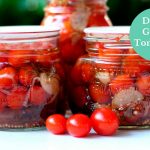
Dilled Grape Tomatoes
Ingredients
- 4 tablespoons dill weed (fresh, washed)
- 1 shallot (peeled and thinly sliced)
- ½ tablespoon mustard seed (yellow)
- 250 g grape tomatoes (1 ½ generous cups / 8 oz weight)
- 1 bay leaf
- Pickle Crisp (optional)
- ½ teaspoon citric acid (optional)
- 1 tablespoon pickling salt (OR non-bitter, non-clouding salt sub)
- pinch chile flakes
- 1 tablespoon light brown sugar (OR ⅛th teaspoon liquid stevia)
- 125 ml cider vinegar (5% or higher. ½ cup / 4 oz)
- 125 ml water (cold. ½ cup / 4 oz)
Instructions
- In a small bowl, mix the washed and chopped dill, the sliced shallot, and the mustard seeds. Set aside.
- Wash tomatoes under cold running water.
- Using a small thin metal skewer, do a prick in the stem end of each tomato.
- Add tomatoes to spice mixture, toss evenly.
- Wash the jar you are going to use in very hot water to heat it.
- Into the jar, put a bay leaf, and ⅛th teaspoon Pickle Crisp, if using.
- Pack the tomato mixture tightly in, leaving 2 cm (½ inch) headspace.
- Combine everything from the citric acid down to and including the water: do this in a large microwave-safe jug or vessel if you are going to heat this in the microwave, or in a pot if you are going to use your stovetop.
- If using a microwave, zap on high until liquid mixture above boils — about 3 to 4 minutes. Mind the "surge" effect when removing it from microwave. (Alternatively, bring to a boil in a saucepan in a pot.)
- Ladle this pickling liquid mixture into jars, leaving 2 cm (½ inch) headspace.
- Debubble, adjust headspace.
- Wipe jar rims.
- Put lids on.
- Process in a water bath or steam canner.
- Process jars for 10 minutes; increase time as needed for your altitude.
- Let stand a few weeks before opening and sampling.
Nutrition
Pricking tip
The purpose of the prick is to stop the tomatoes from exploding during processing. Ball notes, though, that “Pricking tomatoes will not prevent the peels from cracking.”
To make quick work of pricking the tomatoes, just invert a meat thermometer and lightly impale the tomatoes’ stem ends on it.
Reference information
How to water bath process.
How to steam can.
For salt substitute, non-bitter, non-clouding Herbamare Sodium-Free was used.
When water-bath canning or steam canning, you must adjust the processing time for your altitude.
More information about Sugar and Salt-Free Canning in general.
Australia and New Zealand vinegar strength special notes.
What is the shelf life of home canned goods?
Recipe notes
- You can use either grape tomatoes or cherry tomatoes. Tomatoes should be about 2 to 5 cm (1 to 2 inches) wide or less. Grape tomatoes have a thicker skin, and tend to be firmer and less juicy than cherry tomatoes, so they are less prone to explode. If you live at an altitude where you would have to adjust processing times longer, to reduce the chance of ending up with mooshy tomatoes you may wish to stick with grape tomatoes as they start out firmer than cherry.
- Yes, leave tomatoes whole. You do not need to peel, slice or quarter them.
- The tomatoes will be a paler red after processing.
- You will get some floaties in each jar, because the tomatoes are not blanched before canning to get air out of them. Using shouldered jars instead of straight-sided jars may be better: the shoulders may help to push some of the floaties down a bit.
- The shallot indicated here would be a European shallot, weighing 25 to 50 g (1 to 2 oz.) You can probably say an average of 30 g (1 oz.) Instead of a shallot, you can use that weight of onion, yellow or white, or of the bulbs of green onions or leeks. That would be about a generous ¼ cup of “onion type veg” after peeling and thinly slicing.
- Instead of pickling salt, you can use any other salt that doesn’t have additives to cause clouding: such as kosher salt, or sea salt. If you use a salt sub, you want to use a non-bitter, non-clouding one such as Herbamare.
- Instead of 4 tablespoons fresh dill weed, you can use 1 tablespoon of dried dill weed, or try 2 teaspoons dried dill seed.
- As of 2019, Ball’s web site has changed the ½ teaspoon of citric acid to being “optional.” Why on earth you’d want to optionally add something that has next to zero flavour, we’re not sure. Ball, it’s either needed for proper acidification, or, it’s not — that’s really the only purpose of citric acid.
- If you run out of pickling solution, quickly zap in microwave some more.
Recipe source
Dilly Tomatoes by Ball / Chef Hugh Acheson. Accessed on Ball’s Fresh Preserving site August 2016 at https://www.freshpreserving.com/dilly-tomatoes—ball-canning-and-preserving-recipes-br1468.html.
Safety Check
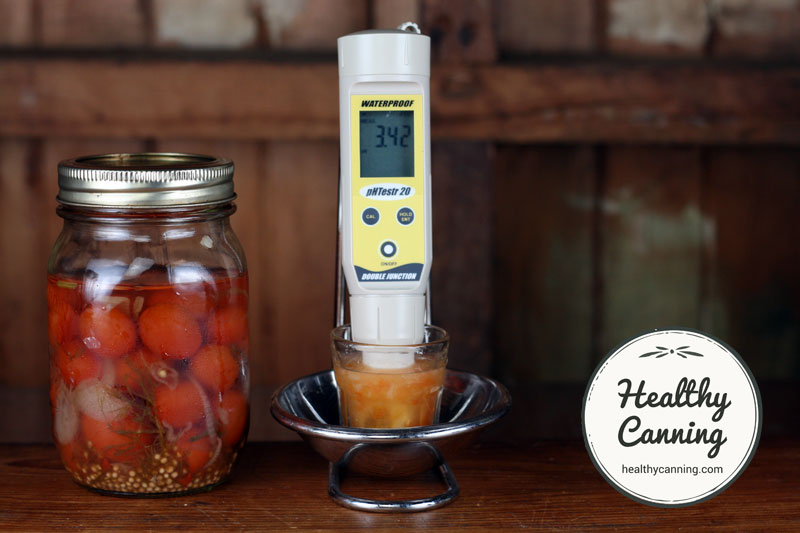
These Dilled Grape Tomatoes had a pH of 3.42, measured after 3 months. pH will vary of course based on tomato variety used, where grown, growing conditions, etc.
Nutrition information
Nutrition info based on 25 to 30 grape / cherry tomatoes (275 g )per jar
Regular version
Per 5 tomatoes
- 18 calories, 197 mg sodium
Sugar and salt-free version
Per 5 tomatoes
- 15 calories, 5 mg sodium
* Nutrition info provided by https://caloriecount.about.com
* PointsPlus™ calculated by healthycanning.com. Not endorsed by Weight Watchers® International, Inc, which is the owner of the PointsPlus® registered trademark.
* Herbamare ® is a registered trademark of the A. Vogel Corporation.

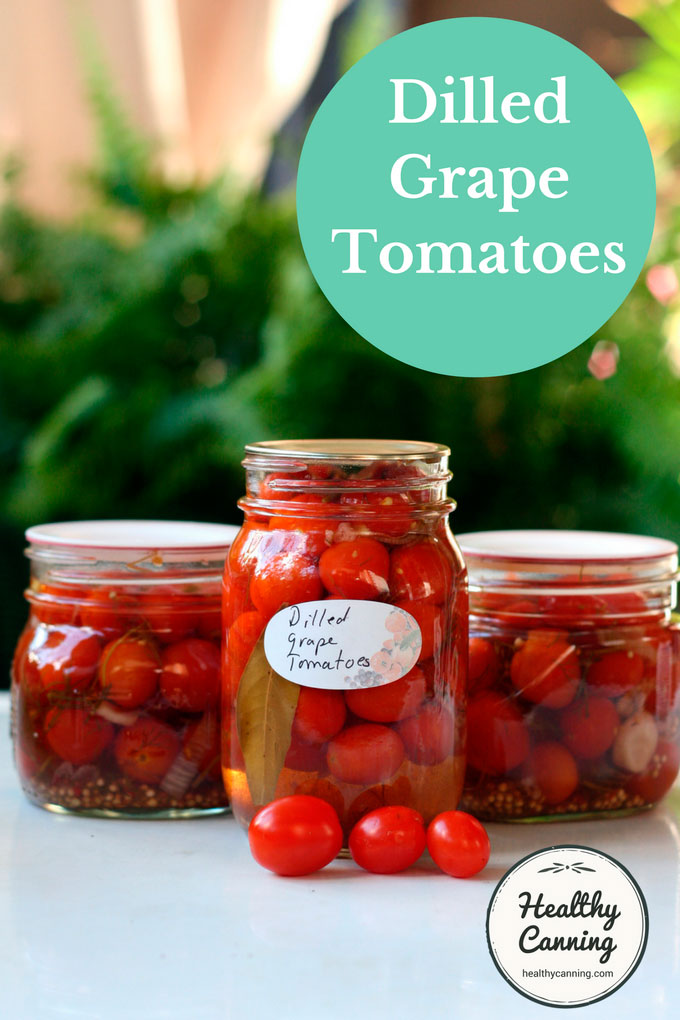
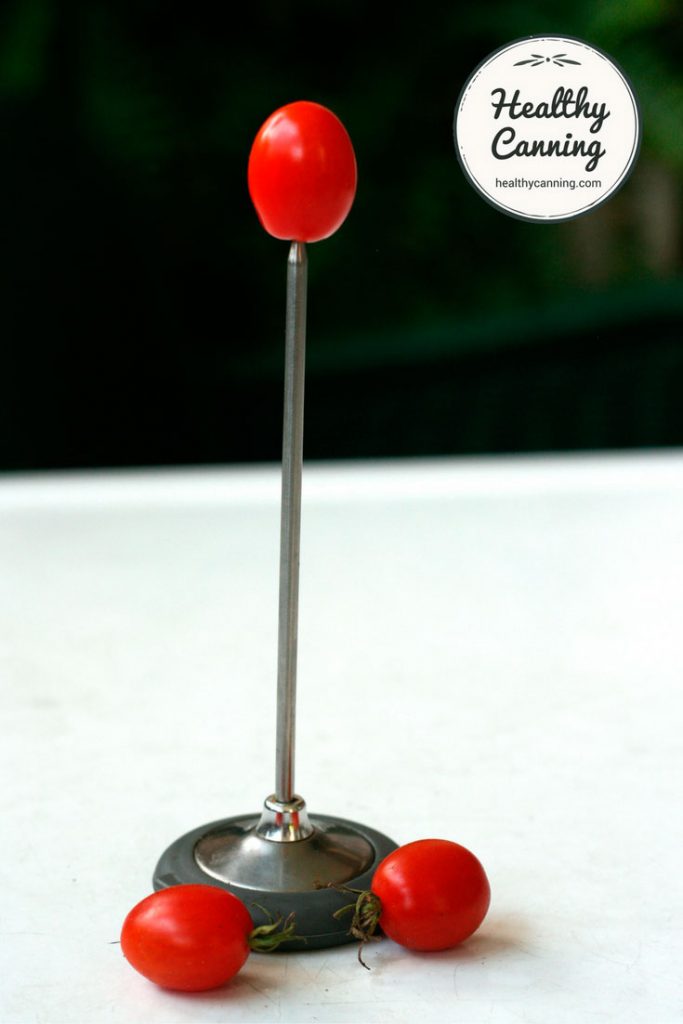
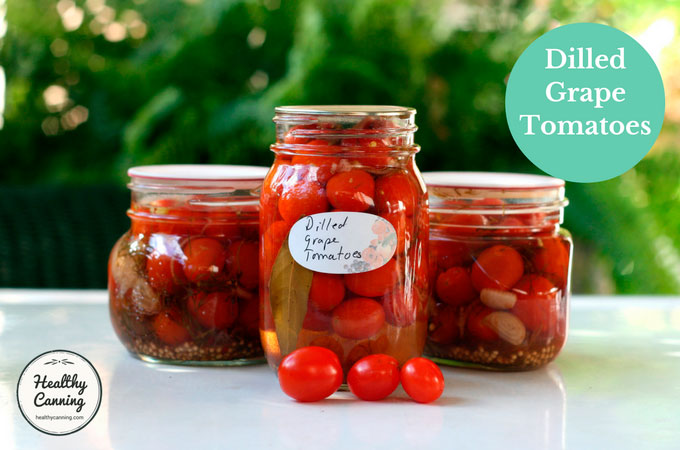
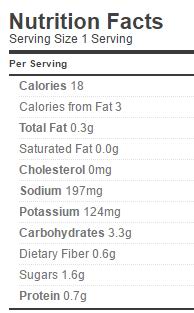
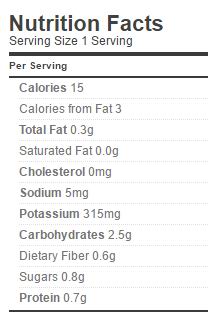
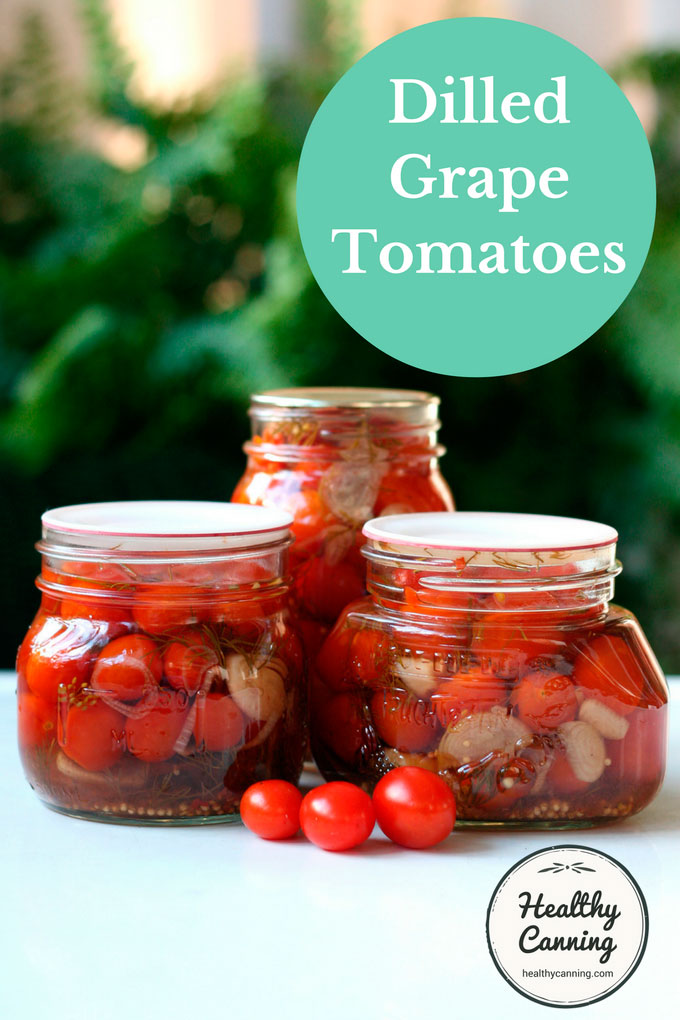
Emme
The instructions say there’s no need to cut the tomatoes, but is there a downside to it? If my tomatoes are on the larger side, I could fit more in a jar by halving them, but will that make them too soft/mushy?
Healthy Canning
Not sure. You can try it!
Nadya
Can I use low pasteurization method with this recipe?
Healthy Canning
For information on the low pasteurization method, and what you can use it with, see here: https://www.healthycanning.com/low-temperature-pasteurization-treatment
Leah
Ball’s website is currently listing the citric acid as optional; do you have any additional information on that? https://www.freshpreserving.com/dilly-tomatoes-br1468.html
Healthy Canning
Thank you for drawing that to our attention. We’ve added optional to the ingredients here. We have no idea why they’d make the citric acid optional — it’s the kind of thing that’s either needed, or it’s not. It’s not as though it adds any flavour.